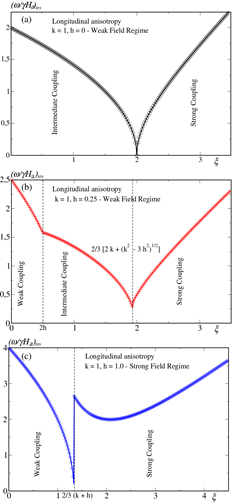People involved: C. Garcia, P. Landeros, R. Gallardo, A. F. Franco and C. Gonzalez.
Exchange springs (ES) are multilayer structures composed of alternating hard and soft magnetic materials that are coupled through exchange interaction. They are of great interest for the scientific community due to their versatility, finding a place in several different applications such as high performance permanent magnets, heat assisted magnetic
recording, and spin-torque transfer devices. This versatility stems from the heterogeneous nature of the ES, which provides the system with high thermal stability and coercivity (hard material) while keeping a high saturation magnetization (soft material).
The ES exhibit different magnetic behavior depending on the thickness of the soft phase. Thus, changing the thickness of the soft phase provides a reliable method for controlling the magnetization properties of the structure. For example, it has been shown[1] that changing the thickness of the soft layer of an ES leads to substantial changes in its ferromagnetic resonance frequency (FMR). The magnetic properties of the ES are also dependent on the nature of the interaction at the interface[2], providing the possibility to obtain interesting effects by tailoring the interlayer coupling.
Materials exhibiting Perpendicular magnetic anisotropy (PMA) are an important type of ES materials where the anisotropy component is predominantly in the direction perpendicular to the plane of the film. Nowadays, they are one of the fundamental components of the hard drive technology, and are potential candidates to further improve this technology through their use in bit patterned recording media and magnetic random access memories. Furthermore,
when tailored to have a high anisotropy, low saturation magnetization, high spin polarization, and/or low gilbert damping constant, materials with PMA can be used to improve greatly the performance of spin-torque transfer devices and magnetic tunnel junctions.
Materials with PMA present a complex mechanism for the relaxation of the magnetization, due to the impurities at the interface which arise local variations on the anisotropy throughout the material. These variations of the anisotropy, in combination with the internal and external interactions, induce bubble and labyrinth domain formation, and eventually a switching due to domain wall motion[3]. It has been shown[4,5] that the magnetization processes and dynamics of a material with PMA depends strongly on the material, the configuration of the thin films, and the interactions. Thus, there is a great interest to understand the different processes that affect the behavior of these materials.
Within our group, this line of research is being explored theoretically and experimentally. Samples are fabricated with the sputtering system, and then characterized through hysteresis cycles and FMR by using our MOKE and FMR setups. Micromagnetic and atomic simulations of the magnetic ordering, hysteresis cycles, magnetic susceptibility, and FMR are performed.
Characterization of the materials through comparison of experimental hysteresis cycles to the Preisach model is being done, and analytical methods for calculating the susceptibility and/or the FMR are being explored.
Furthermore, by approaching the ES and PMA materials as a multilayer structure, all our methods and techniques can be adapted to be used in more general multilayer systems.


[1] S. Tacchi, et al., J. Phys. D: Appl. Phys. 47, 495004 (2014).
[2] A. F. Franco, H. Kachkachi, J. Phys.: Condens. Matter 25, 316003 (2013).
[3] J. E. Davies, et al., Phys. Rev. B 70, 224434 (2004).
[4] R. Sbiaa, et al., J. Appl. Phys. 107, 103901 (2010).
[5] S. Pal, et al., Appl. Phys. Lett. 98, 082501 (2011).
[6] A. F. Franco, et al., J. Appl. Phys. 116, 243905 (2014).